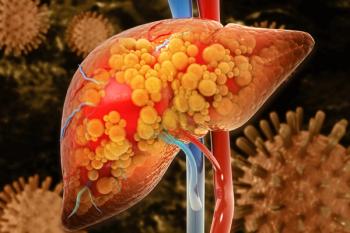
Which Patients With COPD Are Affected the Most by Extreme Weather?
It is already well established that patients with COPD have exacerbations during winter as well as during heat waves in the summer months, and researchers in Germany sought to see which patient groups might be potentially more vulnerable to the effects of climate change in order to see who might need targeted care.
Which patients with
Researchers in Germany investigated to see which patient groups might be potentially more vulnerable to the effects of
Besides identifying who is most at risk, researchers also sought to determine the summer temperature threshold where the AECOPD-related daily hospital admissions increase.
The authors analyzed retrospective demographic and medical data of 990 patients, who were hospitalized for AECOPD. The cases were grouped into the following cohorts: spring (admission between March and May); summer (June to August); autumn (September to November); and winter (December to February).
AECOPD hospital admissions from 2006 and 2010 were grouped into a “hot summer” cohort and cases from 2011 and 2012 into a “cold summer” dataset. Researchers obtained climate data on the daily minimum, mean, and maximum temperatures, air pressure, and air humidity from the German Meteorological Office.
Patients hospitalized for a COPD exacerbation during winter were significantly older than summertime patients (P = .040) and also thinner than patients exacerbating in spring (P = .042). The researchers wrote that increased patient loads, such as during influenza epidemics, could persuade emergency departments to preferentially admit only the older, frailer patients.
COPD exacerbations during hot summer periods happened more often to patients with a history of myocardial infarction (P = .014) or active smokers (P = .011), which is in line with previous studies. An AECOPD during colder summers occurred in patients with a higher Charlson index, who suffered in increased numbers from peripheral vascular diseases (P = .016) or tumors (P = .004). Summertime hospital admissions increased above a daily minimum temperature of 18.3°C (P = 0.006).
Identifying these patient groups most at risk for climate-related exacerbations is important in order to enable climate-adapted prevention through patient guidance and treatment, the researchers wrote.
The study did have some limitations, such as from the retrospective design and the usage of anonymized patient data. Due to anonymization, multiple hospital admissions of the same patient occurred as separate cases in the dataset, which could potentially influence the results. Other potential confounders that were not analyzed are exposure to air pollutants and socioeconomic status. The researchers suggested that a prospective study that includes cohorts with and without the seasonal AECOPD risk factors should be performed.
Reference
Hoffmann C, Hanisch M, Heinsohn JB, et al. Increased vulnerability of COPD patient groups to urban climate in view of global warming. [published online October 23, 2018]. Int J Chron Obstruct Pulmon Dis. doi: 10.2147/COPD.S174148.
Newsletter
Stay ahead of policy, cost, and value—subscribe to AJMC for expert insights at the intersection of clinical care and health economics.












































